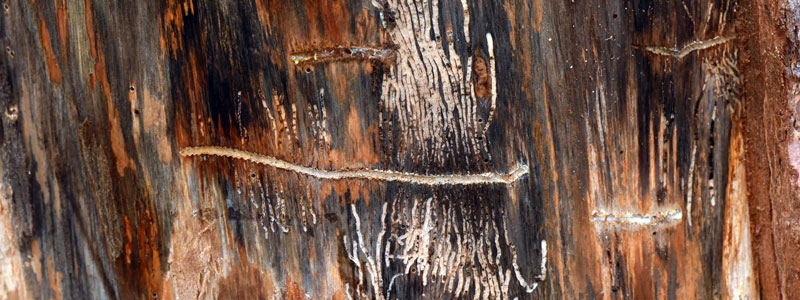Fir Engraver Beetle
Fir engraver is a native insect and an integral part of Colorado’s mixed-conifer ecosystems, playing a key role in the dynamics of these ecosystems



Fir engraver (Scolytus ventralis) is a bark beetle that attacks and kills species of true fir (Abies spp.) in western North America. Fir engraver is a native bark beetle, an integral part of Colorado’s mixed conifer ecosystems, and plays a key role in the dynamics of these ecosystems. Fir engraver beetles occur from southern British Columbia, Canada, south to Baja California Norte, Mexico and east to Montana, Colorado and New Mexico. This bark beetle is considered the most important bark beetle pest of true fir forests in western North America. The fir engraver beetle prefers trees that are stressed from root diseases, prolonged periods of drought, defoliating tussock moths, western spruce budworm, or wounding.
Signs & Symptoms
Outbreaks of fir engraver consist of a scattering of dead and dying trees or small groups of five to 10 trees. In Colorado, the foliage of dying white fir fades from its typical blue-green color to light orange. Successful attacks are accompanied by the presence of red-brown boring dust in bark crevices. Woodpecker damage (where the birds have stripped portions of the bark from infested trees in search of larvae, leaving accumulations of bark at the base of trees) is often an indicator of bark beetle presence. Once adults emerge from infested trees, the bark surface will be covered with tiny exit holes.
Annual Insect Activity
CSFS Forest Entomologist Dr. Dan West produces an Esri Story Map for the Annual Forest Health Report, which offers users an interactive way to find out about forest conditions and insect activity in their area.
Management Options
Forest management, designed to maintain healthy forests, offers the best long-term solution for creating conditions to reduce outbreaks of fir engraver and other bark beetles. Thinning overly dense stands of trees, to reduce competition and promote tree age and species diversity, is the most successful forest management strategy to promote tree vigor. Removal of wind-thrown and harvested trees within one year, before attack beetles have sufficient time to produce a new brood, is also a successful strategy for managing fir engraver.
Options for management include:
- Infested trees can be cut and the bark burned in place or the bark can be peeled and burned. Chipping, or removing the bark from the infested bole of the tree to expose developing larvae to desiccation is also effective. Cutting, splitting, and stacking wood to dry out the environment for developing larvae will also work if performed early enough in the developing stage of the larvae, well before the larvae are preparing to pupate.
- Infested trees can be cut, limbed, bucked into workable lengths and left exposed to the sun. Logs must be rolled every few days to expose all infested portions of the logs to direct sunlight. Timing is important to allow enough exposure and heat to dry out the environment under the bark so developing larvae do not mature.
- Infested trees or logs can be submerged in water for at least six weeks. Log ponds at sawmill sites are an excellent place to practice this tactic.
Publications
Fir Engraver Beetle (7 MB PDF)
2017 Highlights
Tree mortality occurred in southern Colorado where white fir grows in mixed-species forests, often with Douglas-fir. Localized areas affected in 2017 included the Sangre De Cristo Range south to the northern portions of the Culebra Range. Eastern slopes of the Wet Mountains continued to have mortality ranging from individual tree impacts to pockets of 10 or more trees impacted. Infestations near the mountain town of Ouray declined after more than five years of infestation. This beetle is estimated to have killed more than 85% of the white fir in the Uncompahgre River Gorge around the town of Ouray.
- 2,500 acres of white fir in southern Colorado were impacted in 2017, compared to 6,300 acres in 2016.

